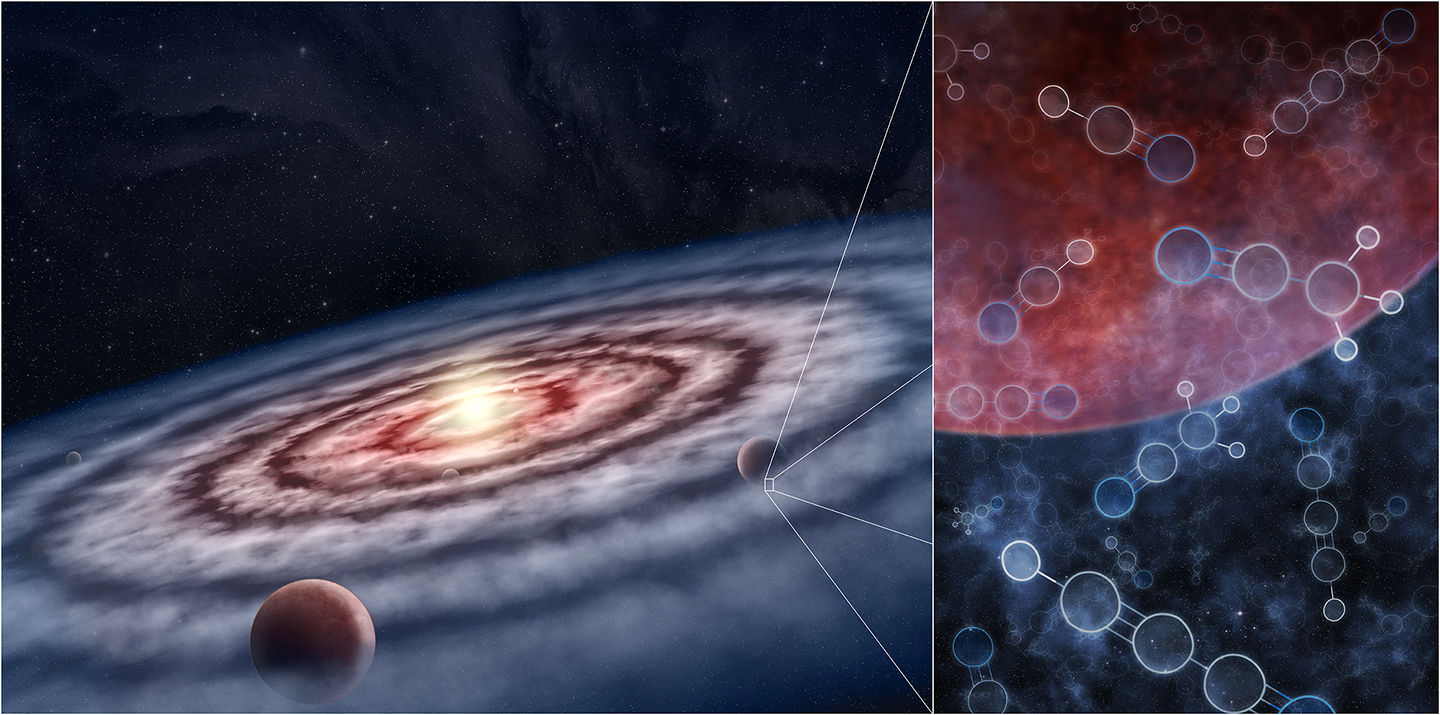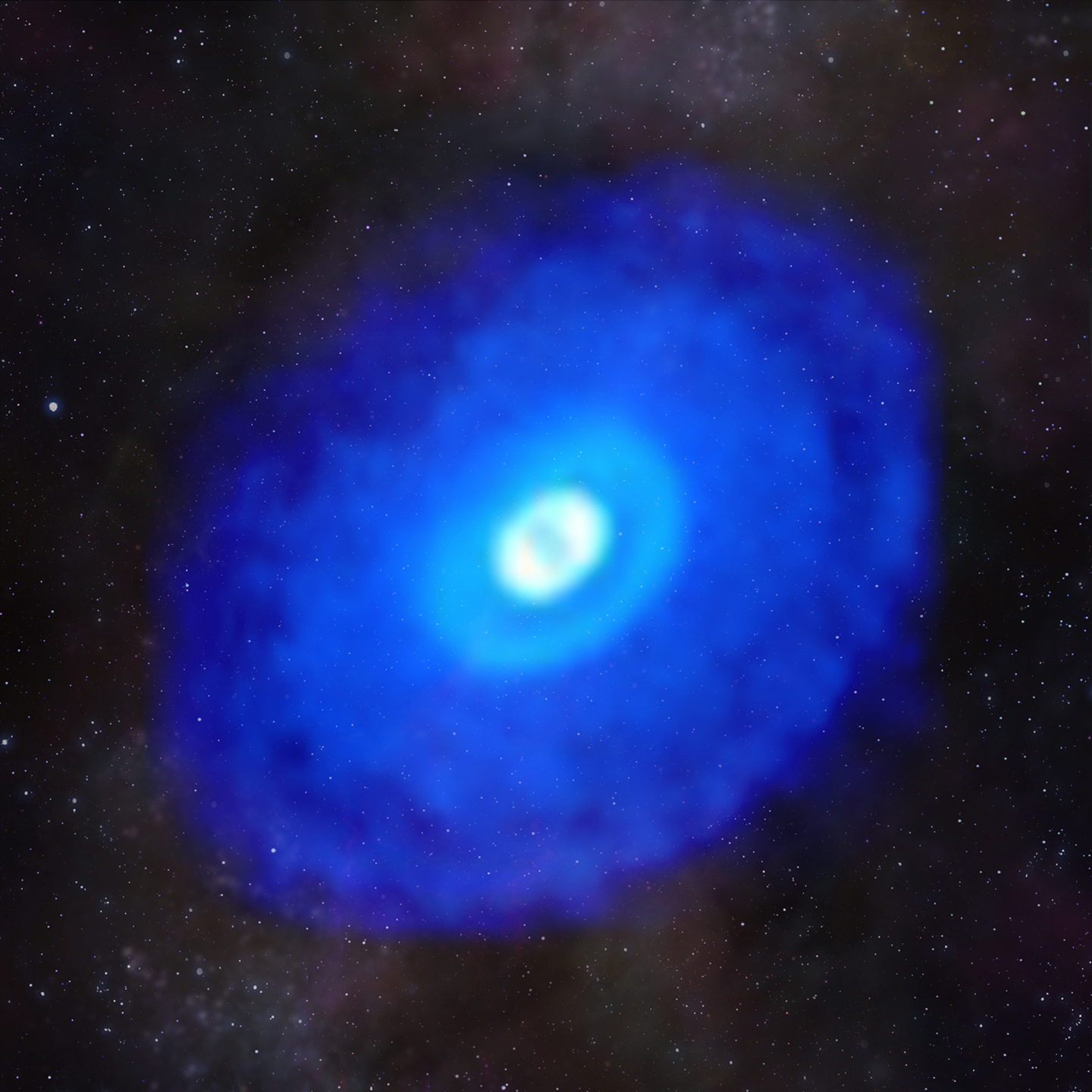Image List
-

In this artist's conception, planets form from the gas and dust in the protoplanetary disk surrounding a young star. The gas is made up of many different molecules, including hydrogen cyanide and more complex nitriles—linked to the development of life on Earth. The soup of molecules in a particular location in the disk shapes the future of the planet forming there and determines whether or not that planet could support life as we know it.
M.Weiss/Center for Astrophysics | Harvard & Smithsonian -

This composite image of ALMA data from the young star HD 163296 shows hydrogen cyanide emission laid over a starfield. The MAPS project zoomed in on hydrogen cyanide and other organic and inorganic compounds in planet-forming disks to gain a better understanding of the compositions of young planets and how the compositions link to where planets form in a protoplanetary disk.
ALMA (ESO/NAOJ/NRAO)/D. Berry (NRAO), K. Öberg et al (MAPS)